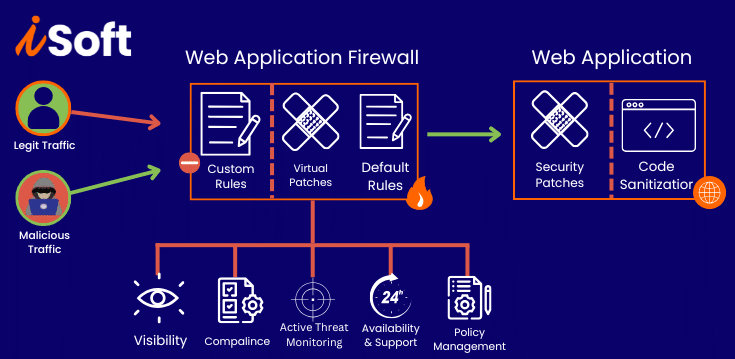The cybersecurity world witnessed a recent disclosure of vulnerabilities that gained little recognition and yet, the triumph in uncovering those key vulnerabilities was a major milestone, the researchers said. Those three companies – Akamai, Cloudflare, and Imperva serve the majority of companies on the Fortune 100 List. They were considered to be vulnerable because of some of those still unfixed issues. They hence made up nearly 40% of the total group of companies chosen.
Understanding the Scope of the Problem

WAFs are one of the most crucial items in the cybersecurity infrastructure of any organization. Initially, WAFs were developed to act as a shield against various cyber attacks, including SQL injection, cross-site scripting (XSS), and other application-level vulnerabilities. But, when these protective technologies themselves are under assault, the repercussions are usually quite alarming.
The Affected Providers
- Akamai
- Cloudflare
- Imperva
The three corporations are leading the market in the WAF sector, for that reason, they serve not only the major portion of Fortune 100 companies but also other companies around the world.
Nature of the Vulnerabilities
It’s the case that those that have been discovered are the ones that allow the potential attackers to take off the WAF protection and operate it as non-functional. Hence, this effectively allowed the hackers to:
- Access sensitive data
- Manipulate web applications
- Potentially gain unauthorized control over systems
Impact on Fortune 100 Companies
The information provided that 40% of the top industrial companies were in danger reveals the common nature of the problem. The companies represented a number of various sectors such as:
- Finance
- Healthcare
- Technology
- Retail
These types of breaches in finance and medical sectors, and even the whole system, have potential consequences for both companies and their customers which would be widespread and severe.
Response from WAF Providers
Following the notification of these vulnerabilities, Akamai, Cloudflare, and Imperva immediately:
- Solved the problems
- Designed and distributed patches
- They talked to the clients who were affected
The businesses assured customers of their unswerving dedication to security and have forged ahead with fortifying their systems in order to keep such problems at bay.
Lessons Learned
The happening represents a very clear big lecture on the cybersecurity principles we have to learn from it, however:
- No security solution is perfect.
- Periodic security audits and penetration tests are the most important.
- Ahead of time, prepare a security approach that involves multiple protection levels.
- Doing any attack gives promptness.
Moving Forward: Best Practices for Organizations
Therefore, the organizations should as a result, consider the following steps:
- Keep regular update and patch of security systems
- Engage additional levels of security besides WAFs
- Adopt frequent security assessments
- Be informed about potential vulnerabilities in any security products
- Develop incident response plan
What is a WAF?
A Web Application Firewall (WAF) is, to speak directly about it, a strong-arm to block website attackers coming in, such as SQL injection, cross-site scripting (XSS), and more application-layer bugs.
How did these vulnerabilities affect Fortune 100 companies?
Fortune 100 companies were each placed at a 40% risk of their data being exposed to unauthorized personnel, web application meddling, and server breaches due to the identified security flaws.
Have the vulnerabilities been fixed?
After days of hard work, with the help of a few necessary patches and some new updates for their WAF products, Akamai, Cloudflare, and Imperva have since then completed the process of addressing the vulnerabilities.
What should organizations do to protect themselves?
To eliminate vulnerabilities, companies need to take secure measures, such as having good security and updating the systems, applying strategies that help in securing themselves from potential threats, and creating a comprehensive incident response plan.
Can similar vulnerabilities occur in the future?
Even though the security system developers do their best to keep these from happening, the changeable character of the cyber-threats makes it possible that there could be new ones. The whole thing is about keeping awareness and having regular staff meetings about fortifying the security systems.
How can companies ensure they are protected against such vulnerabilities?
Businesses should closely cooperate with their protection providers, conduct ordinary observations, and wise steps like in-depth defense are so important that involve being attentive to the new security changes of the industry in mitigating threats.
Conclusion
The announcement of the WAF’s flaws that are found in Akamai, Cloudflare, and Imperva has been a splendid notice that even the most secure security tools can also, unfortunately, be prone to shortcomings. This scene has the significant issue of continuous monitoring, periodical security checks, and perhaps a multilayered security mechanism altogether. The businesses’ response to cybercrime involves being ahead of the attackers by keeping current with the latest security measures, as well as strengthening their IT securities to counteract potential cyber-attacks.
The affected WAF suppliers’ reaction to the incident reveals the IT industry’s commitment to fixing vulnerabilities quickly. Yet at the same time, it shows the demand for continuous collaboration between the security research community, service providers, and end-users to find and prevent the weaknesses before they can be misused by cybercriminals.
Thus, the proper course for the companies involved might be that they take this opportunity to re-evaluate what security steps they should take, try and be the best players in their brand, and above all, create a cyber-safe environment throughout their entire commercial activity. In fact, they will be able to defend themselves more effectively, as well as their partners from the threats of the growing digital world, through such measures.



